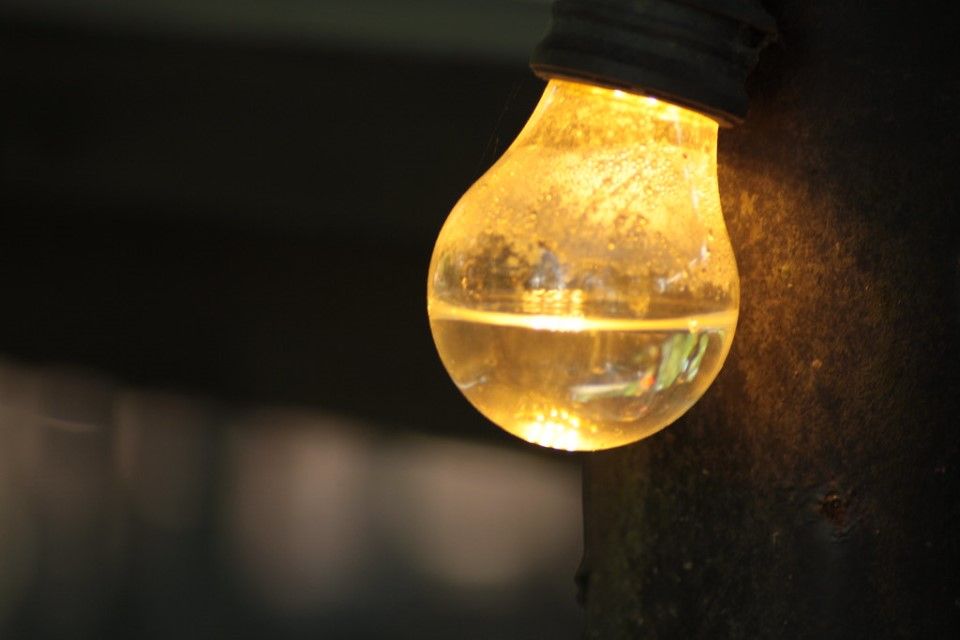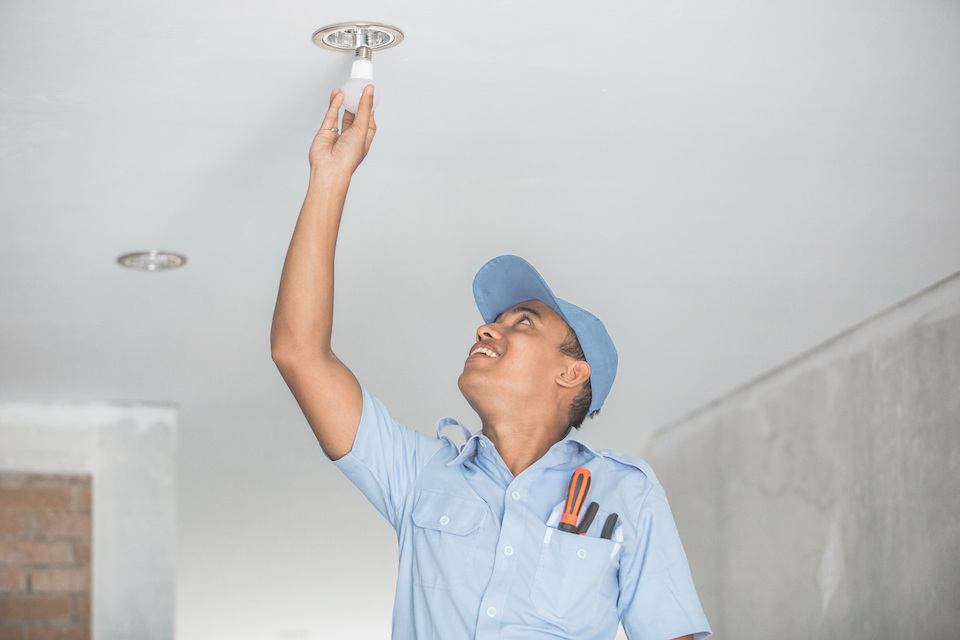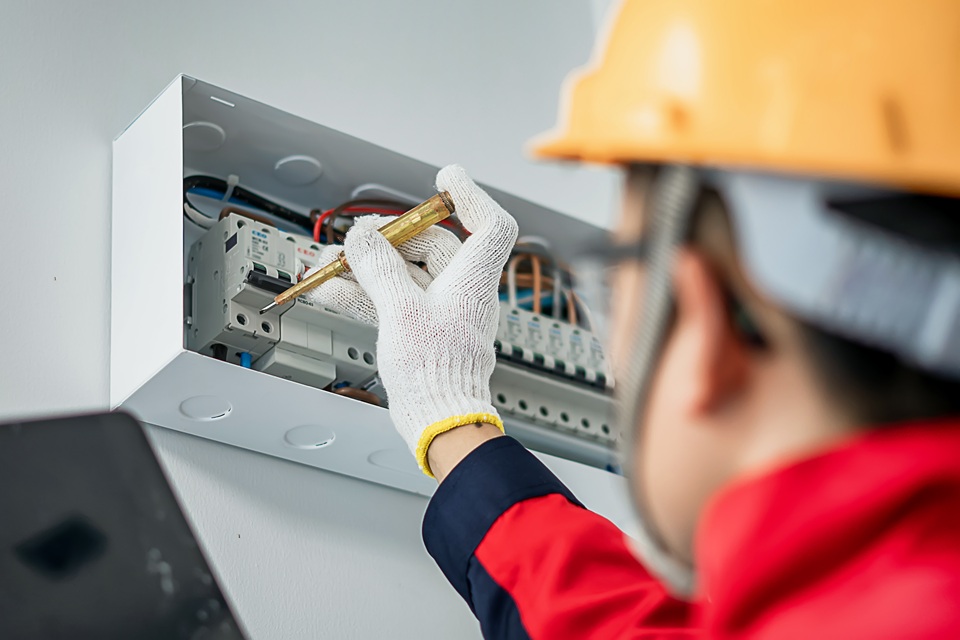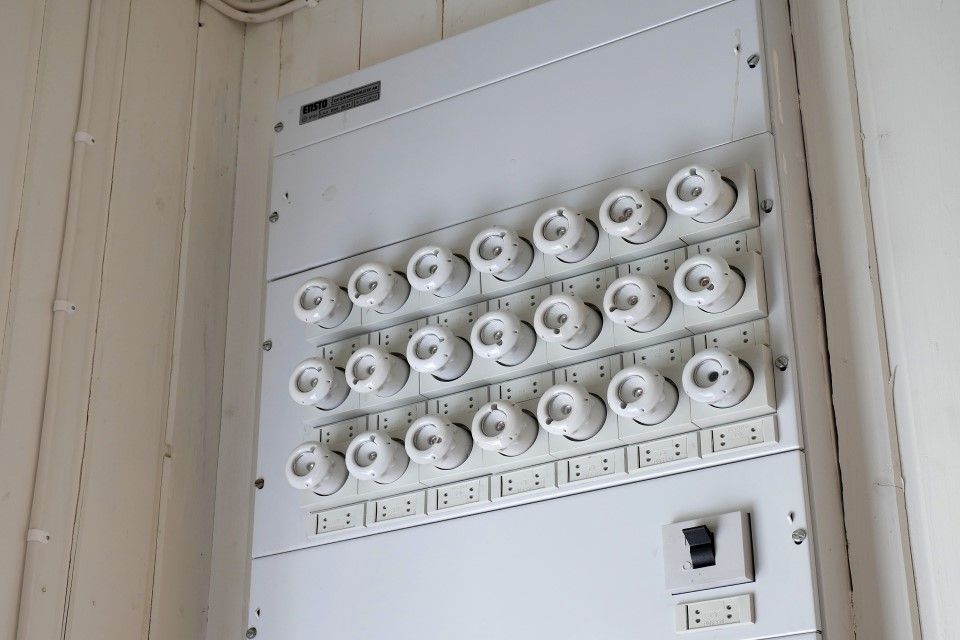How Much Does it Cost to Move a Light Switch or Socket?
Take a look at the move a light switch cost and move a socket cost figures below.
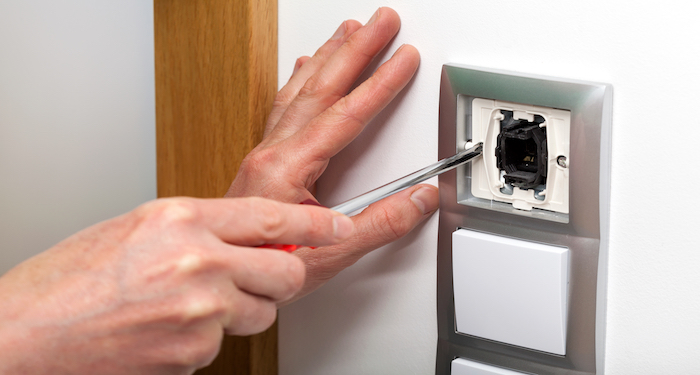
The average cost of moving a light switch or socket is £130 to £170, with the same estimated price range covering the installation of a new light switch/socket.
Prices may vary depending on your location, with standard rates for labour fees generally being higher in London and the South East compared to the National average.
If you’d like to have a light switch or socket simply replaced, expect a bill of around £60 to £90 with costs rising to between £100 and £140 to have several light switches or sockets replaced. Again, you may experience regional differences when hiring a qualified electrician to complete the job.
Lastly, to have several new light switches/sockets installed, you'll need to budget around £220 to £290.
Moving Light Switch Prices
The supply cost to move or install a single new light switch or socket is normally around £10 to £20 with the rest of the total cost made up of labour fees. If you require several to be actioned at the same time, there might be a discount available on supply costs when buying in bulk.
| Job Description | Total Costs |
|---|---|
| Move a Light Switch/Move a Socket | £130 to £170 |
| Install a New Light Switch/Socket | £130 to £170 |
| Replacing a Light Switch or Socket | £60 to £90 |
| Installing Several New Light Switches/Sockets | £220 to £290 |
| Replacing Several New Light Switches/Sockets | £100 to £140 |
- How Much Does it Cost to Move a Light Switch or Socket?
- What are the Supply Costs for Moving a Light Switch or Socket?
- Additional Costs of Relocating a Socket or Light Switch
- Tradesmen Costs for Moving a Light Switch or Socket
- How Long Does It Take to Move a Light Switch or Socket?
- Types of Light Switches
- Types of Sockets
- Planning Permission and Building Regulations
- How Much Does It Cost to Remove a Light Switch or Socket?
- FAQs
- Sources
What are the Supply Costs for Moving a Light Switch or Socket?
We’ll now look at the supply costs (a.k.a. standalone costs) involved in moving a light switch/moving a socket and other related jobs. The supply costs exclude the cost of labour and any additional expenses.
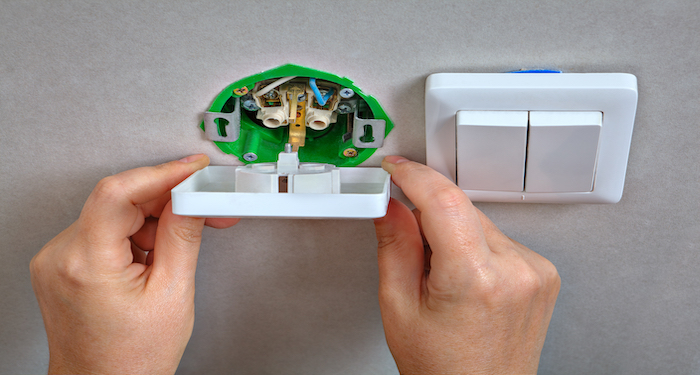
Looking at the prices, the supply costs are generally between £10 and £20 for light socket or light switch relocation. The same average supply costs would apply for installing or replacing a light switch/socket.
However, the standalone costs rise to approximately £20 to £40 if you'd like to replace or install several light switches/sockets.
The cost of supplies makes up about 5-15% of the overall bill if hiring a professional to perform the job (which is generally the best course of action).
On the other hand, if you were to undertake this working DIY, these costs are especially useful as these prices are approximately what you'd expect to pay if purchasing the materials directly from a retailer.
Here's something you should be aware of…
These jobs aren’t always suitable for DIY purposes. You should only undertake this work by yourself if you have the right skills and knowledge and clearly understand the safety steps involved.
Working with electrics can be lethal if mistakes are made. It’s always vital that you isolate the relevant electrics from the mains or turn off all power to make sure you avoid an electric shock.
Additional Costs of Relocating a Socket or Light Switch
When having a socket or light switch moved (or paying for a similar job), you may decide it's a good time to do some other related work around your home. Let's look at some additional jobs you may want to pay for when having an electrician on your property.
New LED Lighting
One fairly common job that electricians perform involves installing an LED light. The supply and fit cost of this job will depend on the specifics. For example, to have LED strip lighting installed beneath kitchen cabinets, you can expect to pay around £200 to £250.
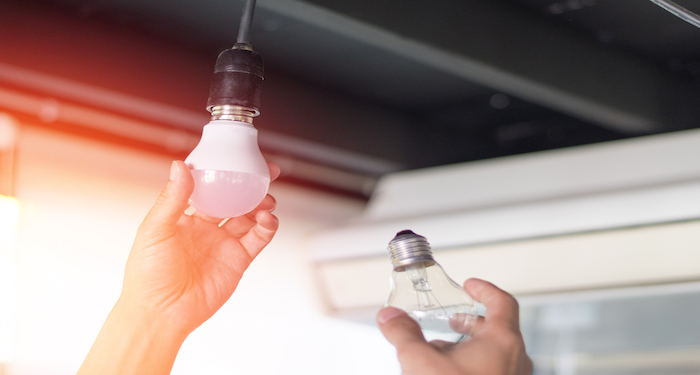
To have a five-foot LED light installed in place of a fluorescent tube, you’d need a budget of about £100 to £150, with costs rising to £200 to £300 should you wish to replace old kitchen lights with LED downlighters.
Any of the jobs mentioned should take somewhere in the range of one to three hours.
Smart Lighting
Instead of using a flick of the switch, imagine controlling the lighting from your phone? With a smart lighting installation you can do just that!
With costs starting from £3,000 for a basic set-up to £10,000 for a complete house, smart lighting is just one of many home improvements that you can action from then installing an App to your hand held device.
Outdoor Security Lighting
Having exterior home security lighting installed on your property is a great way to make your home that bit safer and increase peace of mind. Security lights can deter potential intruders and alert you to someone loitering outside.
There are various types of outdoor security lighting to choose from. You'd likely pay about £100 to £150 for a motion sensor security lighting installation, £100 to £200 to have floodlights installed, somewhere between £100 and £1,100 to fit landscape lights and £100 to £500 for spotlights.
PAT Testing
Portable appliance testing or PAT involves testing the safety of electric appliances and equipment on a property.
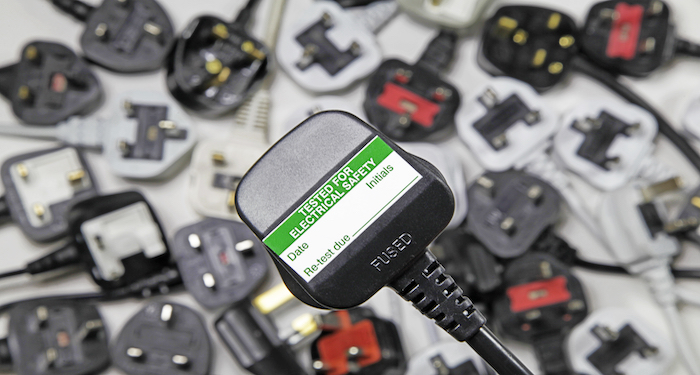
While electrical safety certificates and PAT testing are only legally required on commercial premises, homeowners may still want to for peace of mind to know their household electrics are safe (and if they aren't, at least, you know and can have them repaired or replaced).
While electricians will generally set a minimum charge, PAT testing costs around £1 to £2 per item. On average, homeowners pay somewhere between £100 and £200 in total for PAT testing around their home.
Rewiring a House
Although a small job on it's own, moving a light switch can be a relatively straightforward task by comparison to a larger house rewiring project.
However, relocating light switches is often part of the wider process, especially if the property is undergoing a complete refurbishment. Rewiring prices can vary, potentially anywhere from £2,500 to £7,000 upwards, depending on the size of the property and the extent of which needs doing.
Tradesmen Costs for Moving a Light Switch or Socket
In this section, we'll look at the cost of labour involved in the jobs we looked at earlier, including moving a light switch.
The tradesmen costs will make up most of your bill when having a light switch/socket installed (approximately 85-95%). It's also important to note that although tradespeople rates may include hiring a handyman, when it comes to moving a light switch you should really hire a qualified electrician.
Electricians charge approximately £200 to £250 per day. As for the hourly rate, one electrician would likely charge somewhere in the range of £25 to £50 an hour (although there may also be a minimum call-out fee).
It’s important to note that labour costs differ greatly across the UK. For instance, electricians charge about £45 to £50 per hour in London, with labour rates above average in general throughout the southeast of England.
On the other hand, costs tend to be below average in regions like Northern Ireland, northern England and Scotland.
Here are some average electrician rates for the UK:
| Location | Labour Cost per Hour |
|---|---|
| Belfast | £20 to £25 |
| Sheffield | £25 to £30 |
| Stoke-on-Trent | £25 to £30 |
| Cardiff | £25 to £30 |
| Liverpool | £30 to £35 |
| Birmingham | £30 to £35 |
| Manchester | £30 to £35 |
| Glasgow | £30 to £35 |
| Oxford | £35 to £40 |
| Reading | £40 to £45 |
| London | £45 to £50 |
How Long Does It Take to Move a Light Switch or Socket?
The jobs discussed in this guide generally take somewhere in the range of three to eight hours. To move a light socket or switch, it will take between three and four hours.
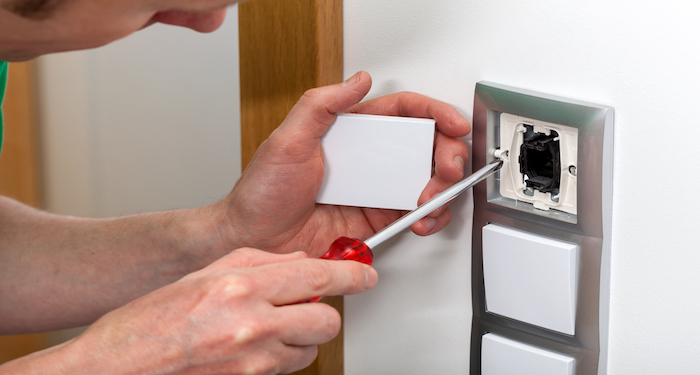
To simply replace a switch or socket expect to take approximately an hour, but installing a new light switch/socket would take about two to three hours.
Beyond that, replacing several switches/sockets takes about two to three hours, but installing several new switches/sockets would take up to a full working day.
In addition…
The duration depends on a range of factors, including the scale of the job, types of switches/sockets, and the number of electricians on the job.
While it will most likely be dealt with by one electrician, sometimes it's possible that two electricians will work together. This would increase the labour cost but, of course, reduce the timeframe of the job.
What's Involved in Moving a Light Switch
- Turn off the power at the mains – this is essential for safety.
- Mark the new switch location and install a back box.
- Unscrew and remove the existing switch, labelling the wires as you go.
- Run cabling to the new position and connect the wires to the new switch.
- Cap off or remove old wiring if needed.
- Fit the new switch, restore power, and test it works properly.
Types of Light Switches
If it's a light switch you want to install, you may be still considering what type to go with. In that case, we've got you covered in this section, where we'll look at various types.
The cost of labour to move, replace, or install one of these light switches would likely land somewhere between £50 and £150.
However, it could be higher for more technical lights such as proximity switches. Of course, the actual supply costs can vary significantly based on the type of light switch as well as the brand and quality.
Rocker Light Switch
A rocker switch is a common light switch that is turned on and off, moving by being pressed to and fro in a sort of 'rocking motion'.
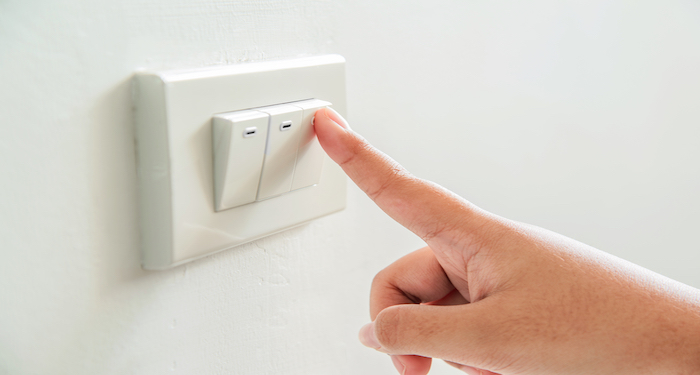
The exact nature of their design can vary significantly, and you may find several rocker switches combined into one compact unit. Sometimes you’ll find the symbols 0 and - present on a rocker switch to indicate on and off.
Push Button Light Switch
One of the most common types of light switches is the push button. These switches are compact as well as flush to their cases. It's also very easy to turn your lights on and off with a push-button light switch.
Toggle Light Switch
A more old-fashioned type of light switch is a toggle switch, a.k.a. a dolly switch. They are a smart option for retro-style interiors.
These switches generally feature a sizeable lever that can be flicked between on and off. Sometimes they feature off and on lettering.
Dimmer Light Switch
These switches are a popular modern option. Unlike your average light switch, a dimmer switch can be turned left and right (usually with a dial button) to adjust the light levels across a brightness range.
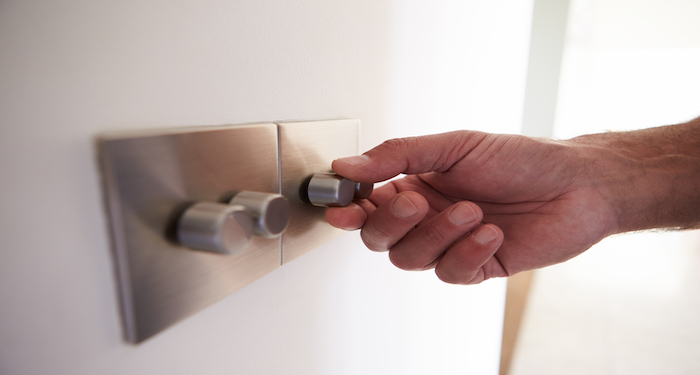
The dial button could also be pressed to turn the light on or off like a more traditional light switch.
So, whether you’d like full brightness, semi-brightness or a moodier ‘cellar-like’ level of light, a dimmer switch gives you a great range of options. Dimmer switches in their own right are also fitting to modern homes.
Proximity Light Switch
A more advanced light switch type is that of a proximity switch. These switches can be turned on as needed, but thanks to the use of sensor technology, the light switch can turn off when it detects that the surrounding space is unoccupied or/and after a given time period.
Proximity switches are not just handy, but they are, of course, also energy efficient; this will both keep your bills down and reduce your carbon footprint. All in all, these switches are a great modern money-saving option.
Types of Sockets
Moving on to the different socket types, again, the labour cost of moving, replacing, or installing a single socket would cost around £50 to £150.
On the other hand, the supply costs, while generally low, will depend on different factors such as the type and quality of the socket(s).
Edison-Socket
The most popular light bulb sockets are referred to as E14 and E27. These numbers refer to the size of the bulb threat diameter as measured in millimetres. Edison sockets are generally featured on halogen bulbs or fluorescent tubes.
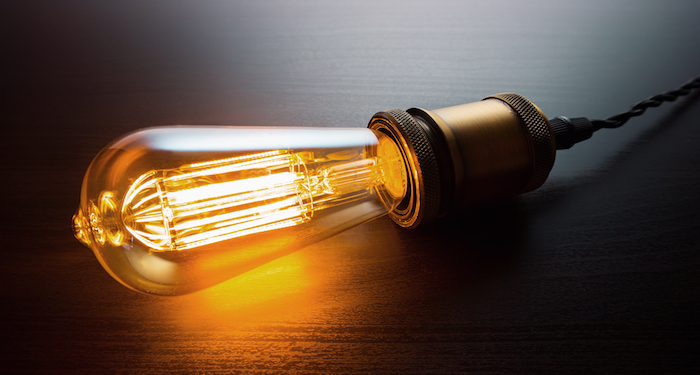
Bayonet-Socket
The most common type of Bayonet socket is usually known as the B15. It's a T-shaped socket that features vertically positioned pins on either side. Another type of Bayonet socket is the B22.
This can be simply plugged in and rotated 180 degrees making for an easy installation (it should only be done when isolated from the mains power, of course).
Pin-Socket
Conventional light bulbs that lack the Edison socket come with a two-pin pin-socket. These sockets are classed as G, standing for glass. This is because the contact pins were originally made from glass.
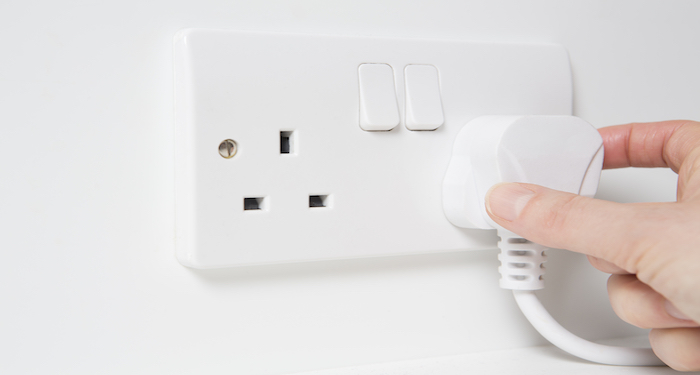
Planning Permission and Building Regulations
Electrical work that involves moving a light switch doesn't typically require planning permission. Although if you live in a listed building, it is always best to check with your local planning authority first as if a property is protected there may be restrictions in place.
Likewise, any changes to your electrics must comply with certain Building Regulations - most notably those outlined in Part P. By hiring a qualified electrician they can ensure the correct procedures are followed, and can self-certify their work to confirm it meets UK standards.
How Much Does It Cost to Remove a Light Switch or Socket?
Simply want to have a light switch or socket removed and the space filled in by a professional? This job would likely take only an hour or less, and on this basis, you can expect to pay about £25 to £50.
You’ll need to add to that the cost of waste removal. You can’t throw electronics with your regular rubbish.
But how can I dispose of the waste then?
Some solutions include:
- Kerbside collection.
- Dropping electrical items at a nearby recycling centre.
- Hand electric items to certain retailers (if the electrics are suitable).
FAQs
Q: Is an electrician needed to replace a light switch?
A: It is not a legal requirement for a like-for-like replacement, although the work is still required to meet IET Wiring Regulations. However, if you are moving a light switch this is when a qualified electrician is usually required to ensure the work meets the appropriate Building Regulations.
Q: What are countdown timer switches?
A: These switches are designed to turn off a light after a certain period of time per the homeowner's choosing. There is a wide range of these light switches available.
Q: Would a dimmable light switch reduce my energy bills?
A: Of course, it would depend on how exactly you use these light switches (e.g., how often, if at all, you actually use lower light settings), but in general, you could expect to reduce your energy usage by around 20%. The downside being the bulbs may need replacing more regularly.



